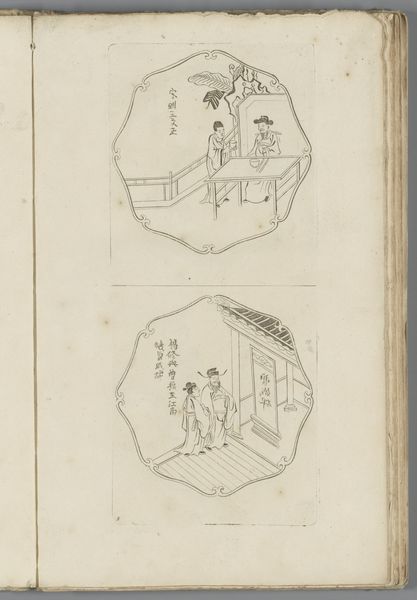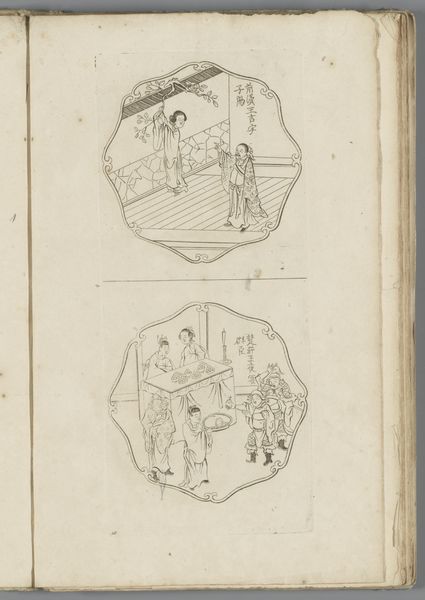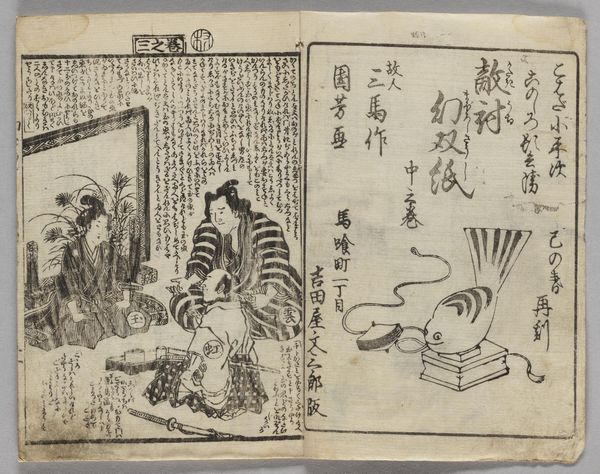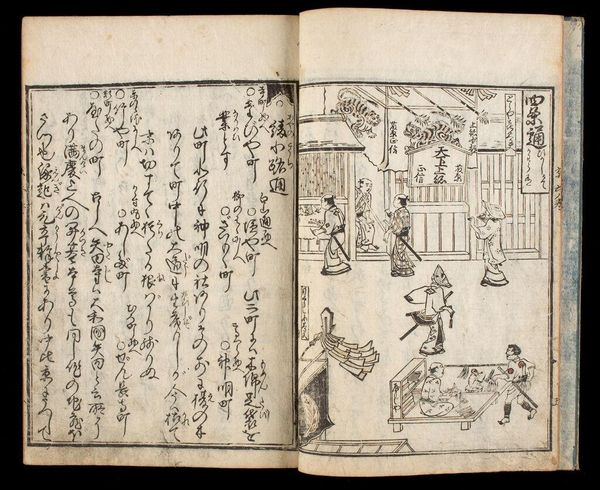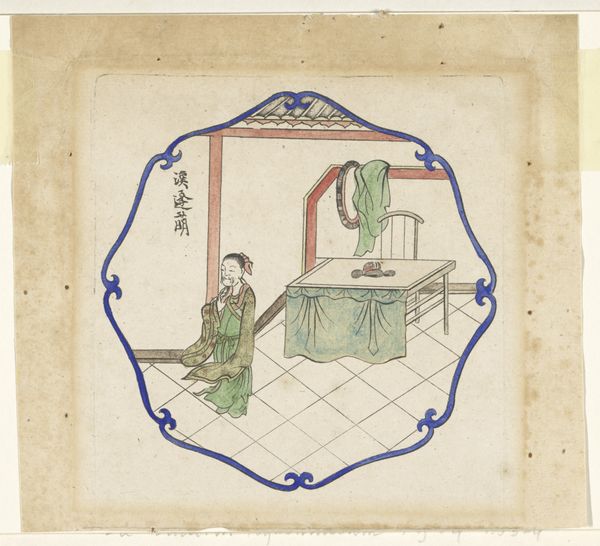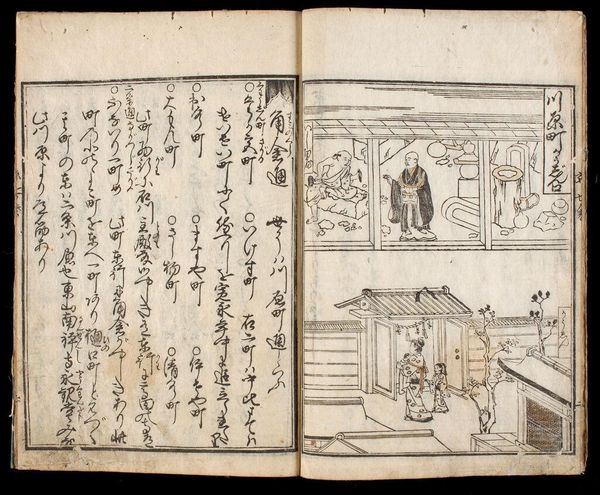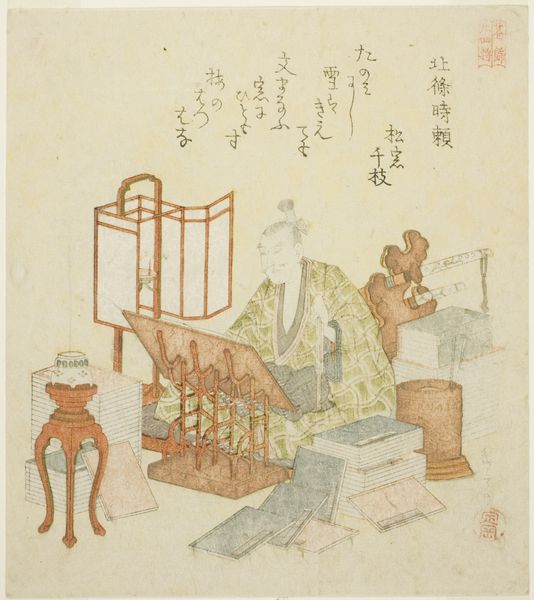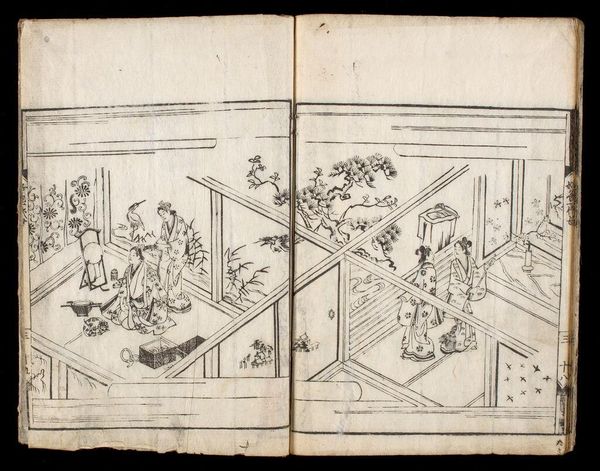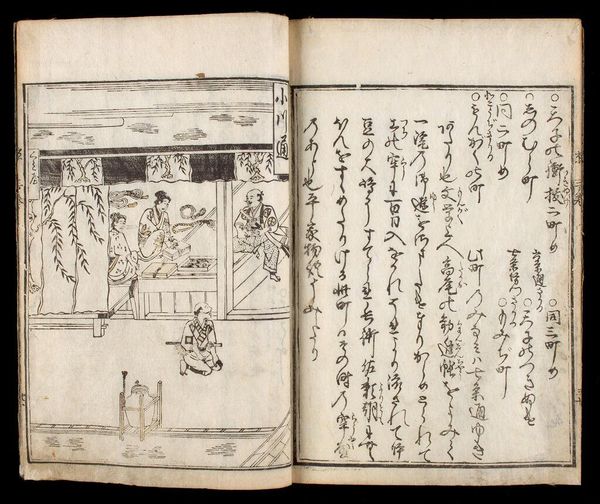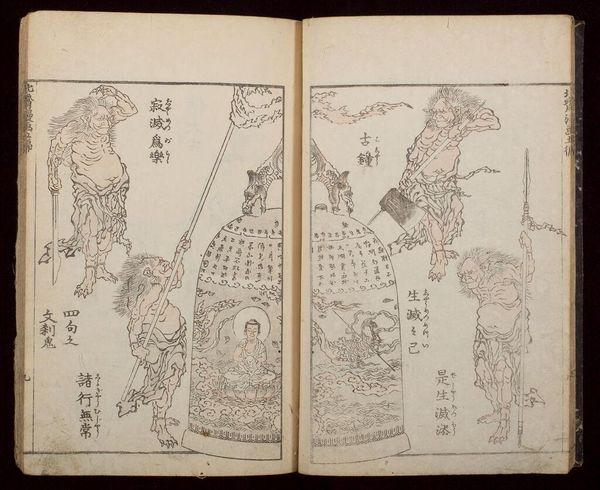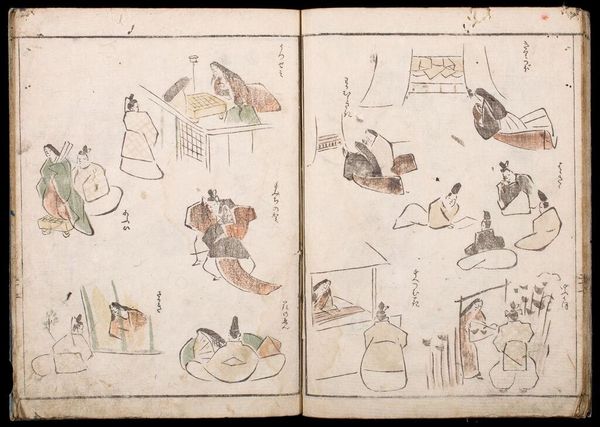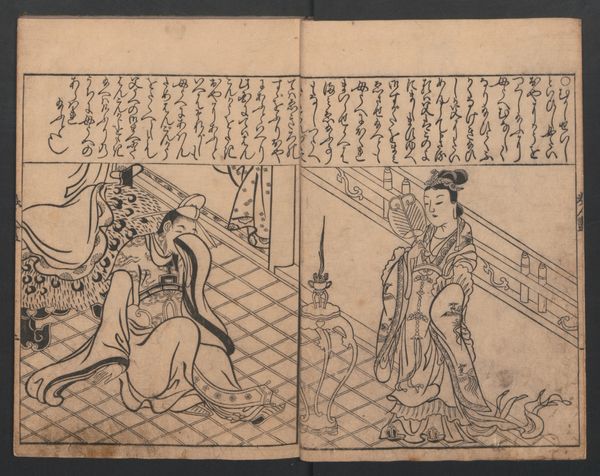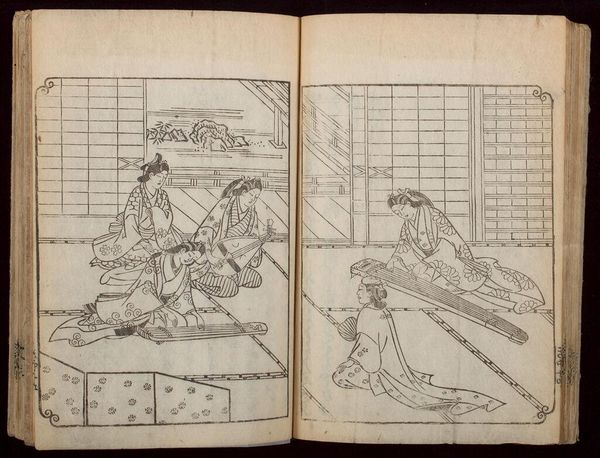
Fêng Mêng van de Han-dynastie / De T'ang-keizer T'ai-tsung ontvangt de schriftgeleerde Hsü Ching-tsung in audiëntie 1702
0:00
0:00
pieterschenk
Rijksmuseum
drawing, paper, ink
#
portrait
#
drawing
#
narrative-art
#
asian-art
#
figuration
#
paper
#
ink
#
line
#
history-painting
Dimensions: height 266 mm, width 117 mm
Copyright: Rijks Museum: Open Domain
Curator: This ink drawing on paper, made in 1702 by Pieter Schenk, is entitled "Fêng Mêng van de Han-dynastie / De T'ang-keizer T'ai-tsung ontvangt de schriftgeleerde Hsü Ching-tsung in audiëntie," now held at the Rijksmuseum. It depicts two separate scenes in decorative cartouches. Editor: My immediate reaction is one of restraint. The monochromatic palette and the thin lines evoke a sense of formal elegance and distant power dynamics, though, that makes the encounter feel very codified. Curator: Absolutely. The line work is precise, emphasizing ritualized courtly gestures. The way the artist employs the conventions of line drawing highlights the structured nature of imperial audiences, revealing an encoded language of respect and hierarchy. Do you see how even the clothing depicted signals social status? Editor: I do. It feels almost like a record of power, a reminder that visibility and representation were so heavily controlled. The bottom cartouche displays the emperor receiving the scholar and what symbols or meanings did they hold within the political framework of the court at the time? What access did most of the population have to images like this one? Curator: This type of history painting served several functions. It preserved memory, communicated authority, and served as a visual teaching tool, reinforcing the moral foundations of governance, for those who had access to the drawing, naturally. There are visual links to traditions that preceded the establishment of the Qing Dynasty, but that claim to the "mandate from heaven" still carried so much weight with court observers. Editor: Exactly. In our present day, understanding images like this reminds me of how crucial it is to deconstruct those narratives, those claims of divinely ordained power. Even something that seems formally contained can provoke dialogue on what these representations meant historically and can still mean today. Curator: It shows that even images of the past can encourage us to rethink assumptions. I was interested in examining what enduring symbols remained within political contexts throughout historical periods, despite changing empires, but I appreciate that you bring into perspective questions of power structures present within it as well.
Comments
No comments
Be the first to comment and join the conversation on the ultimate creative platform.
